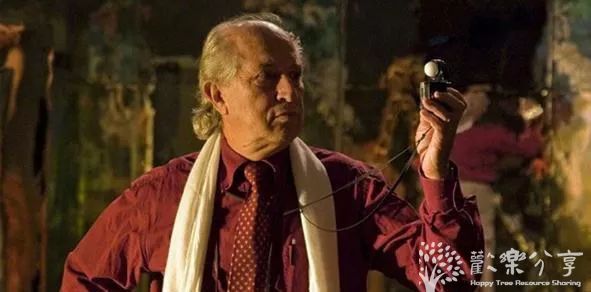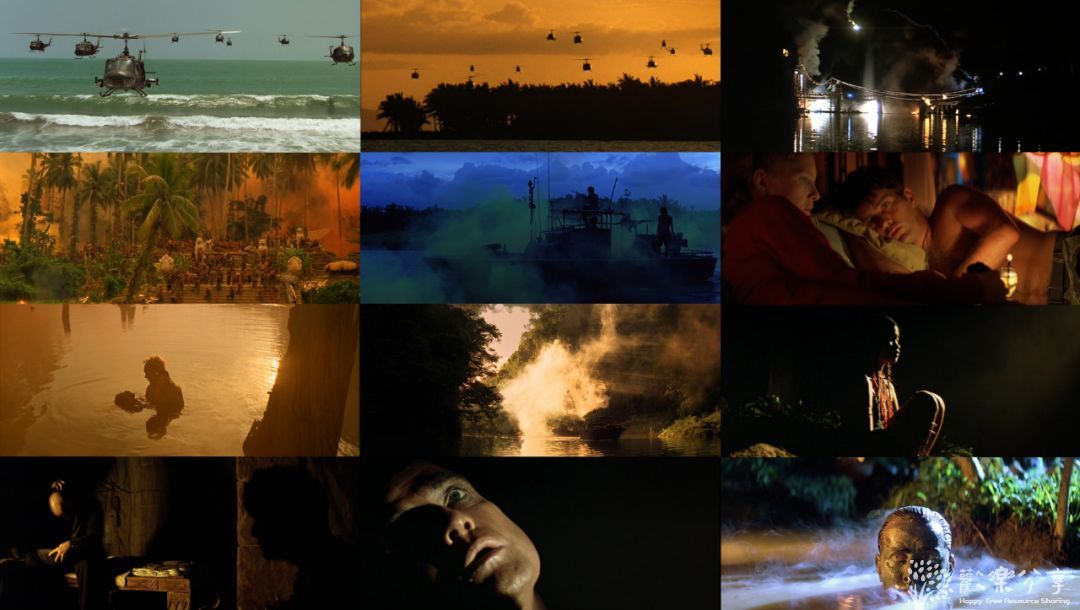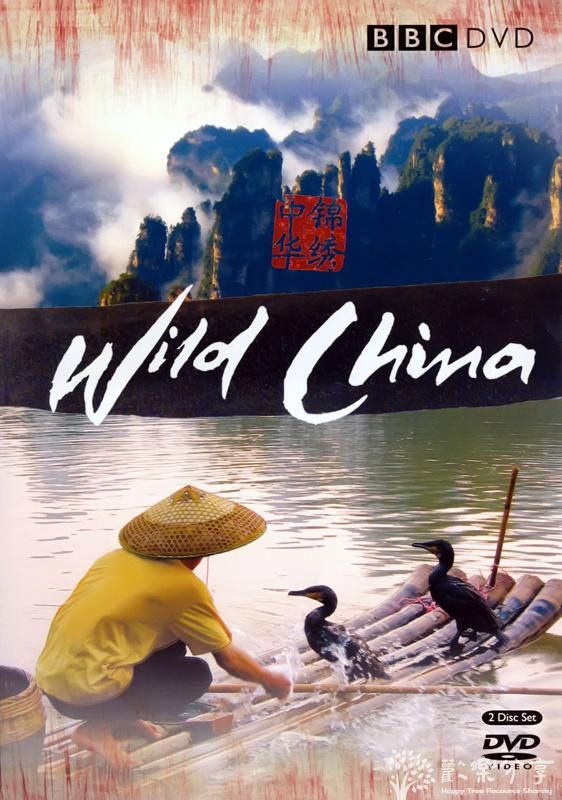“
对我而言, 摄影真的就代表着“ 以光线书写” 。它在某种意义上表达我内心的想法。我试着以我的感觉、我的结构、我的文化背景来表达真正的我。试着透过光线来叙述电影的故事, 试着创作出和故事平行的叙述方式, 因此透过光影和色彩, 观众能够有意识地或下意识地感觉、了解到故事在说什么。”
——斯托拉罗
”

维托里奥·斯托拉罗
意大利摄影师维多里奥· 斯托拉罗1940年生于罗马,父亲是意大利光明电影院的一名放映员。
11岁的时候就被父亲送到德奥斯塔摄影技术学院学习。16岁时,到意大利电影培训中心进修。1958年,他考入意大利国立电影学院,完成了两年制的电影摄影教育并且拿到了摄影硕士学位。
20岁时,维托里奥·斯托拉罗成为了摄影师奥多·萨瓦达的助理。当他21岁的时候,摄影师马可·萨佩里邀请他进组拍摄,让他成为了意大利最年轻的掌机员。不过,当时的意大利整个电影工业进入了一个萧条期,他一直没有找到合适的工作,这让他事业停滞不前。

《随波逐流的人》
直到1963年他重新回到摄影助理的岗位,参与拍摄了导演贝纳尔多·贝托鲁奇的处女作《革命前夕》。斯托拉罗并没有荒废这段没有工作的空闲期,反而利用这段空闲的时间研习了各种艺术的表现形式,这段经历对他以后的的摄影创作影响深远。
1969年,在拍摄导演弗拉克·罗西的电影《青年进行曲》时,维托里奥·斯托拉罗正式获得摄影师的资格。同年,贝纳尔多·贝托鲁奇邀请他在自己的影片《蜘蛛的策略》中担任摄影师。从此两个人开始了漫长的合作生涯。他们紧接着拍摄了后来产生巨大影响的《随波逐流的人》。

《现代启示录》
1978年,他与另一位关系密切的导演弗朗西斯·福特·科波拉合作,拍摄了经典巨片《现代启示录》。维托里奥·斯托拉罗凭借影片《现代启示录》,《烽火赤焰万里情》和《末代皇帝》3次获得奥斯卡最佳摄影奖。
如果你梦想,如果你热爱,如果你相信,那么你所梦想的早晚会发生。

“ 用光线参与叙事和表意” 是斯托拉罗摄影艺术的最基本理念之一, 这在他的许多作品里都得到鲜明而充分的体现。他认为电影摄影是在胶片上“ 用光写作” ,是“ 以光线书写的文学” , 电影摄影师是运用光影、色调、色彩, 并调和了他个人的经验、感性、智慧和情感来创作的作家。
“ 以光线写作” 的核心是用光线创作的影像“ 讲述” 电影的故事, 表现时空、情绪、人物性格、主题、节奏或其他无法言传的东西。
维托里奥·斯托拉罗谈他的光影人生
电影是一种关于影像的语言,有它自己的词汇和节奏。我们可以从3方面来理解它。

《至尊神探》
与贝托鲁奇的合作
当人们说我是一位用光来作画的画家时,我会否定那种观点。因为画家只是用静态图像的形式来表达自己,这和图片摄影师有些类似,但我是一名电影摄影师。我认为作为一名摄影师,必须要参与讲故事,要去设计故事如何开始,经过什么样的事件后如何结束。这就是我把摄影工作当成是用光去写作的原因。电影摄影师需要了解文学、音乐和绘画这3方面的知识。我的意思不是说你必须成为一名作家、作曲家、建筑师或者哲学家,不用那么深入,但是必须要了解这3类领域的知识,只有了解它们,才能更自如地做电影的摄影工作。当你和导演或者你自己在拍摄中,需要选择机位或者想以一种特别的方式来构图时,我们不能太随意,一定要为了叙事而确定拍摄形式,一定是为了向观众传达某些主题才做的选择。

斯托拉罗工作照
如果把两位演员放在一个画面里,其中一位处在光区,另外一位处在阴影里,那么通过不同的光线造型处理,通过画面就能显示出两个人的关系,是和谐相处还是处于对立斗争中。如果为演员布上暖光,那么观众不会通过眼睛来感觉温暖,而是通过身体来感受这种温暖的气氛。观众一定是能感受到这种情感的,所以,毫无疑问,如果你恰当地运用了光影的语言,你就能用光线讲故事了。


《随波逐流的人》
后来,当我拍摄电影《随波逐流的人》时,我开始对在故事中渗透视觉语言有了想法。这部电影第一部分的故事发生在法西斯独裁时期,讲的是男主角在12岁时枪杀了一个对他毛手毛脚的男人后,从此觉得自己是个异类。表面上他觉得自己是个杀手,但是内心深处知道自己是个同性恋者,他选择隐瞒自己真实的感受而像所有人一样带着虚伪的面具生活,做一个随波逐流的人。针对这个故事,我的想法是把他身上的光线处理成光区和暗区截然分开,泾渭分明,借此来强调故事中的主人公内心的矛盾冲突。
随着影片剧情的发展,我将画面中的光区与暗部慢慢地融合在一起。当主角到达法国的时候,我把画面中所有的阴影都去掉,照亮了所有区域,因为那个时候,对于一个意大利人来说,法国就意味着自由之地。达芬奇说过,光与影的结合创造了色彩,所以我感觉在影片《随波逐流的人》中的巴黎部分,应该将画面处理成蓝色,因为蓝色代表了自由。

《巴黎最后的探戈》
两年后,当我再次到巴黎拍摄电影《巴黎最后的探戈》时,我被每天清晨的暖光迷住了。那时候是冬天,这种光是由室内人造的暖光与室外冷调的自然光组合而成的。于是,我把这种处理运用到了故事中,用这种色调来表现马龙•白兰度扮演的角色所处的人生阶段,并用橙色来代表夕阳。那时候,我总是利用类似的画面语言来帮助叙事和塑造人物,但是说实话,我也说不出太多大道理来,也不知道为什么要这么做,只是凭直觉感到这么做很合适。
与科波拉合作拍摄《现代启示录》

直到拍摄《现代启示录》时,我开始真正能够使用颜色来制造冲突了。比如,用自然界原有的颜色代表越南文化,用一些人造色彩代表美国文化。我还在黄昏的丛林戏中使用柔和的自然光,在夜戏中使用强烈的直射光,以此来制造视觉上的冲突。
《现代启示录》电影片段
当我为马龙·白兰度拍摄最后一场戏的时候,觉得彻底明白自己在干什么了,我在有意识地用光影来参与叙事。片中库尔茨的角色就是一个象征元素,他不仅仅是片中的一个角色,还代表了一些不安的美国人内心深处对战争的恐惧。所以,每当这个角色在画面中出现的时候,我都让他完全被黑暗笼罩着。

《现代启示录》
拍完《现代启示录》后,我决定暂停一下手中的工作,花一年的时间充电学习,只有这样,才能更有意识地发掘光的内在含义,而不是仅仅去使用亮部和暗部。从此,我发现了一个色彩的世界。
我开始研习绘画、文学和建筑,以此去进一步有意识地了解影像的含义。为了同样的目的,我还拍了大量照片。
在家待了一年后,我觉得自己已经准备好把对色彩的研究带到电影中。《难补恨晴天》是我复出后拍摄的第一部影片,如果要为这部电影找出一个代表颜色的话,那就是黑色,因为黑色代表了片中女主角处在危机之中时的不安。
事实上,如果我能把自己的职业生涯打个比方的话,我的摄影风格的第一个阶段可以说是画面里只有暗部、亮部和过渡部分3个内容;而我摄影的第二阶段是从《难补恨晴天》这部影片开始的,这个阶段是从黑色到白色的全色谱时期。
我在影片中真正地开始使用色彩来进行视觉表达是从《月神》这部影片开始的。我记得当时读贝纳尔多剧本的时候,曾经注意到导演把一位母亲的故事命名为“月神”。直到我的妻子提醒我月亮就是母亲的象征后,我才更清晰地意识到贝纳尔多是要用一种象征化的手法来表达。所以我开始学习弗洛伊德的一些理论,了解孩子在与父母接触时,在感受上分别会以什么颜色来代表。从那次研究中,我了解到色彩代表着和谐与冲突,每个人都在潜意识里通过色彩感受不同的情感。所以从《月神》这部电影开始,我有意识地去把色彩当做视觉符号来表达。

《随波逐流的人》
幸运的是,我和导演贝纳尔多在同一时期都意识到了这点,并且达成了共识。当他找到了独有的方式去表达自己的时候,正好我也找到了自己的表达方式。在拍摄电影《随波逐流的人》时,我们完全是在一种自然的状态下默契合作。我知道自己在处理摄影方面有很大的自由度,而且只要是对叙事有帮助,我就用光和阴影把导演脑中设想的镜头运动和构图都传达出来。印象最深的例子是《随波逐流的人》中的一场戏。戏中男主角到达巴黎去拜访自己的老教师,教师为他解释柏拉图的洞穴理论。贝纳尔多当时和我说他需要像学生一样,对人生重新进行哲学上的思考。我马上明白我要做的就是在画面中建立出“洞穴”的感觉,只开一盏灯,然后把其余的都关掉。
在拍摄过程中,我们突然意识到,柏拉图的洞穴理论对于电影本身来说也是一个绝妙的比喻:观众就好像被束缚的囚徒;洞穴外的阳光和火焰就好像是投影的光束;矮墙外用投影制造幻觉的人们就好像是电影里的演员;那堵矮墙就好像是银幕。我记得当时我和导演拍这场戏时特别激动,因为我们虽然互相之间没有说太多解释的话,但是我们知道彼此正在一起重建达芬奇曾经构建的那个投影出来的幻象世界。
《末代皇帝》电影片段
当我第一次读溥仪写的两本关于末代皇帝身世的书,很好奇如何去表现这个特殊的人物。这是一个在禁锢中长大的孩子的故事,他的世界极其封闭,甚至都不知道自己根本不再是皇帝了。所以,既然光代表着知识和意识,并且由7种颜色组成,所以,我想能不能根据牛顿的色彩光谱理论,用不同的颜色来诠释溥仪人生的不同阶段呢?拿我自己的人生经历来说,记忆里的某个阶段总是会与一种特殊的颜色相关联。我思考之后,把对这部影片最初的创作构想全部说给贝纳尔多听了。

我对这部电影的构想是把人生和光线联系起来,用不同的颜色来对应不同的情感。为了把主角内在的心理历程一步步视觉化出来,我也在色谱范围内做了一个色彩阶梯的设计。所以,当溥仪回忆起自己生为天子的时候,我使用了红色色调。红色是出生和生命的象征,这也是为什么我们安排了很多夜戏的原因,因为夜戏里我可以在戏中设计火把,而火把的火光会带来温暖的色调。第2个颜色我选择了橙色,用它来代表溥仪生活在故宫时,感受到母亲和家感觉。第3个颜色我选择了黄色,把黄色用在溥仪登基的时候,用来代表意识的觉醒。而绿色代表知识,我把绿色用在溥仪的英文导师入住紫禁城时,通过教育让溥仪了解到世界的真实面貌。影片中,英文导师坐着绿色的汽车进宫,并且送给溥仪一辆绿色的自行车,片中类似的细节还有很多。
我们使用完整的色彩符号来代表溥仪的一生。
不过,当贝纳尔多接受了这种色彩上的设计,并且把方案交给服装设计师詹姆斯·艾奇逊和艺术指导斐迪南多·斯卡尔菲奧蒂时,詹姆斯十分吃惊,因为他正打算在开场戏里尽可能地用上所有的颜色。
我对他说,没有必要用上所有颜色,用一些主要的就好。斐迪南多对此开始有些犹豫,但是当拍到最后他用紫色和靛青的色调搭建完满洲里的宫廷后,他感觉这个方案很好,所有的颜色搭配得恰到好处。

《烽火赤焰万里情》
我生命的第1个阶段都与贝托鲁奇联系在一起,第2个阶段是科波拉,第3个阶段则是沃伦·贝蒂。当我被沃伦·比蒂邀请去拍摄他的独立执导的第一部影片: 史诗巨片《烽火赤焰万里情》时,开始并不顺利,因为我从来没有和一位演员出身的导演合作过,我们有完全不同的工作视角。我习惯于从一个外部的视角去看待每场戏,习惯于电影的语法,对我来说,机位的设置、设备的选用或者是机身的运动都是视听语言的体现。
与卡洛斯·绍拉合作
1995年,我遇到了卡洛斯·绍拉,他邀请我和他一起去拍《弗拉明戈传奇》,从此我开始去了解西班牙文化和弗拉明戈舞的世界。卡洛斯原本是一位黑白片时代的摄影师,他拍彩色片的时候并不看中色彩在片中的作用。他曾经对我说,是我把他带入了一个崭新的色彩王国。

《弗拉明戈传奇》
和贝托鲁奇一样,卡洛斯喜欢自己掌机,自己凑到机器前,用某种特别的方式控制空间调度。当我给他的画面里加入了色彩的象征意义时,一开始他特别震惊,不肯接受。后来我觉得不应该只是嘴上说说,我得拍给他看。在电影《弗拉明戈传奇》开拍前,有一次我们排练舞蹈。排练时,他告诉我他想要什么样的镜头运动方式,我就开始准备布光,这时候我没告诉他自己准备怎么弄。从黑场开始,我操作着自己常用的照明控制面板给他演示了整场戏的灯光层次。在彩排过程中,我试拍了各种效果直接给他看,卡洛斯渐渐地开始欣赏我的想法。从那时候开始,他接纳了我的视觉思维。
在电影《弗拉明戈传奇》里,我主要使用了太阳和月亮的象征。当我们拍摄《巴黎最后的探戈》时,贝托鲁奇是想用探戈来表达对人生的思考。所以每一个独立的段落都有一个不同的颜色来代表一段经历,一步一步深入到他的潜意识中,去触及童年的内心。在拍摄《波尔多欲望天堂》时,我觉得需要在画面里大量地使用图片。在制作设计师的协助下,我们印刷了内饰的图片放到画面中演员的周围。除了演员坐着的椅子,沙发等家具是实物,画面里其余的东西都不是实物,只是打印到塑料纸上的图像而已。我们会用某种颜色,从某个角度来突出它们。
这会给观众造成一种感觉,觉得演员所饰演的人物是一直生活在其中的,或者形成一种空幻的感觉,因为戈雅是一位空想家,也是一位不可思议的画家,他本人就会给人一种空幻的感觉。另外,卡洛斯写作这个故事,也算是对他自己年轻岁月的一次回顾。要知道,在我们年轻时和年老时,总会有一些相同的画面浮现在眼前,挥之不去。

《一代画家卡拉瓦乔》
已故英国电影摄影师,奥斯卡奖获得者约翰·阿尔科特曾经说过,维托里奥·斯托拉罗1981年摄制的影片《赤色分子》是“有史以来所有的影片中结构最美的一部佳作”。
曾经多次获得电影摄影奥斯卡奖的哈斯克尔·魏克斯勒则说,斯托拉罗1978年拍摄的《阿迎萨》“是一部富于光彩美的影片,也是用光进行创作这一行中所能达到的顶峰”。
《美国摄影家》杂志评论斯托拉罗时也说:“他是摄影艺术中活着的里程碑”。此外,去年在波兰托伦市举行的《国际电影摄影艺术节》把终身成就奖授予年仅54岁的斯托拉罗。
我们每个人所拥有的精神,可以通过艺术得到永生的。
2001年,美国电影摄影师学会 (American SocietyofCinematographers)将终身成就奖授予六十岁的斯托拉罗,以表彰他对电影摄影艺术作出的杰出贡献。他是迄今为止该奖项最年轻的获得者,他的艺术观影响了众多摄影师的创作,是摄影艺术活着的里程碑。

在2015年5月,斯托拉罗先生来华,举办了为期三天的斯托拉罗摄影大师班
新片场学院将上线大师班的录制版视频课程
让我们共同去探索斯托拉罗的摄影艺术!
大师班课程安排
第一天
使用光影色彩元素创作
符号学
光影色彩的戏剧性和心理学
电影放映和分析:《现代启示录》(导演:弗朗西斯·科波拉)
Apocalypse Now - Redux (dir.Francis FordCoppola)
第二天
电影摄影的艺术—穿越百年电影之旅
审视从20世纪初到现代的电影摄影在风格和形式上的演变
大师亲自介绍伴随他成长,对他影响深远的电影佳作
电影放映和分析:《赤红分子》(导演:沃伦·比蒂)
Reds (dir. Warren Beatty)
第三天
卡拉瓦乔的画中的光影
利用光与影的关系来展示生命
电影放映和分析:《末代皇帝》(导演:贝纳尔多·贝托鲁奇)
TheLast Emperor (dir. Bernardo Bertolucci)
免责声明:本站所有资源均来自用户分享和网络收集,资源版权归原作者所有,仅供研究使用,禁止商业用途,如果损害了您的权利,请联系网站客服,我们尽快处理。 【免费的东西不长久,支持作者才有动力开发】










